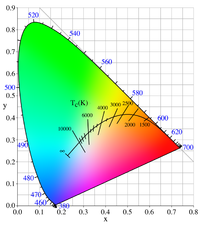
Photo from wikipedia
The intrinsic charge-transfer property bears the primary responsibility for the sluggish redox kinetics of the common electrode materials especially operated at the low-temperature. Herein, we report the crafting of homogeneously… Click to show full abstract
The intrinsic charge-transfer property bears the primary responsibility for the sluggish redox kinetics of the common electrode materials especially operated at the low-temperature. Herein, we report the crafting of homogeneously confined Fe7Se8 nanoparticles with well-defined graphitic carbon matrix that demonstrate a highly efficient charge-transfer system in a designed natural coral-like structure (cl-Fe7Se8@C). Notably, the intricate architecture as well as highly conductive peculiarity of C concurrently satisfy the demands of achieving fast ionic/electrical conductivities for both Li/Na-ion batteries at a wide temperature. For example, when employed cl-Fe7Se8@C as anode materials to assemble full batteries with the cathode of Na3V2(PO4)2O2F (NVPOF), decent capacities of 323.1 and 175.9 mAh g-1 can be acquired at temperature of 25 and -25 °C, separately. This work are significant for further developing potential anode materials for advanced energy storage and conversion under low temperature condition.
Journal Title: ACS applied materials & interfaces
Year Published: 2019
Link to full text (if available)
Share on Social Media: Sign Up to like & get
recommendations!